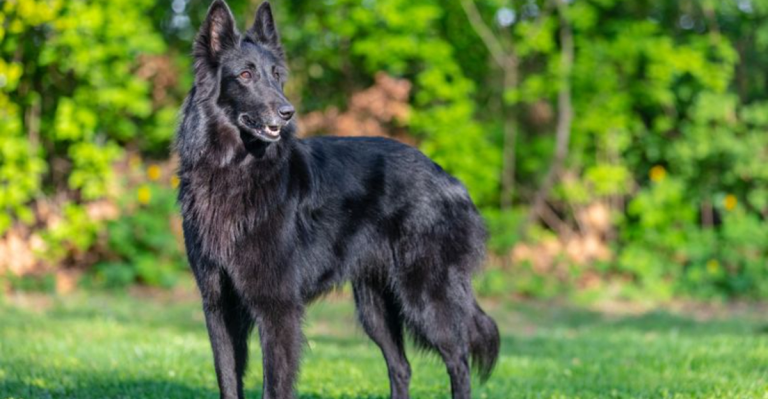15 Habits That Keep Your Australian Shepherd Well Cared For

Every Australian Shepherd has a switch that flips without warning. One minute, they’re calm, and the next, they’re trying to herd other pets and, sometimes, furniture. Knowing how to channel that drive without wearing them or yourself out takes strategy. So, here are ten habits to keep things focused and surprisingly satisfying for both of you.
Prioritize Morning Energy Outlet

Morning movement matters. For this breed, a structured walk or agility drill within an hour of waking helps stabilize energy. Without it, alertness can escalate into anxiety. Early sessions build control, which reduces unwanted behavior and helps your Aussie feel more centered before the day unfolds.
Rotate Mental Games To Beat Boredom

Mental stimulation fuels stability in this sharp and active breed. Use puzzle feeders, scent games, or shell challenges and rotate these tasks thrice weekly. Consistent variety enhances pattern recognition and impulse control, skills that continue to influence behavior well beyond the bounds of playtime.
Stick To A Consistent Mealtime Routine

Could a predictable meal schedule change your dog’s behavior? Yes, because consistent feeding routines reduce anxiety and help regulate energy release. Two structured meals spaced evenly each day encourage hormonal balance and digestive health, reinforcing the routine your Aussie naturally craves.
Create Indoor Obstacle Courses For Stimulation

Use pillows and boxes to set up soft barriers or jump targets. Fifteen minutes of guided movement can help keep physical and mental energy in check. When weather interferes with outdoor time, this routine provides purposeful exercise without overstimulating or exhausting your Aussie.
Offer Purposeful Jobs At Home

Daily tasks can reduce restlessness; it helps to ask your Aussie to carry items or round up toys. These small assignments create a satisfying structure. Without them, their energy often shifts toward pacing or destructive play. Purpose replaces chaos with calm intention.
Allow Supervised Off-Leash Time

Unstructured freedom encourages autonomy and helps reset an overstimulated mind. In fenced yards or safe areas, allow your Aussie to explore without commands. Ten-minute sessions once or twice a week support better body awareness and emotional balance, contributing to a calmer, more centered dog.
Socialize Beyond The Dog Park

New sights and sounds add depth to their social library. For example, exposure to new gardens and gradual introduction to kids and wheelchairs promote adaptability. Don’t limit their interaction to dogs. It narrows their coping skills outside familiar spaces.
Maintain A Structured Sleep Environment

Sleep resets behavior. So, choose one quiet corner and use it only for rest. Consistency tells your dog when to switch off, whether it’s a crate or a cushioned mat. A structured sleep routine cuts down nervousness and increases emotional regulation over time.
Give Frozen Treat Toys To Build Patience

Cold snacks slow everything down. Stuffed Kongs or frozen broth cubes stretch out feeding time while keeping their brains busy. Instead of racing through mealtime, your Aussie shifts into a calmer pace of engagement, learning that patience earns rewards without needing verbal correction.
Celebrate Success With Consistent Calmness

End every focused activity with a predictable wrap-up. Say “all done,” offer a brief reward, and pause together before transitioning to rest. Keep repeating this ritual. It will help your Aussie internalize closure. In time, calm endings will become the emotional cool-down they instinctively follow.
Encourage Independent Time Without Isolation

Independence grows through quiet repetition. Start with short sessions where your Aussie spends time in a separate room, paired with a favorite chew or treat toy. Gradually increasing these moments helps build tolerance and trust, teaching your dog to relax without constant contact and boosting emotional flexibility.
Practice Controlled Herding Outlets

Try guided herding drills using large rolling balls or marked targets. One or two 10-minute sessions per week can help redirect and constructively drive. Without this type of task, instinct may spill into chasing children or pets. The structure maintains safety and satisfaction.
Offer Massage Time To Build Trust

Touch eases tension. So, calmly place your hands on your dog’s shoulders or back for a gentle rub. It can teach that stillness is a moment for release, not alertness. Regular massage like this builds trust, increases tolerance to handling, and gives your Aussie a way to unwind that isn’t tied to a task or command.
Protect Against Overstimulation In Busy Spaces

Crowded sidewalks and noisy gatherings can easily overwhelm sensitive dogs. Therefore, begin with short, structured exposures and reward calm, neutral reactions. Then, always have an exit plan in place. Managing input in real time helps prevent sensory burnout and reduces the risk of reactive behavior.
Brush Coat While Reinforcing Calm Behavior

Brushing sessions reinforce patience when paired with words like “easy.” Keep tools soft and movements steady. Five-minute grooming routines a few times a week double as handling practice. Use this time to model cooperation and build stress-free habits around touch.






